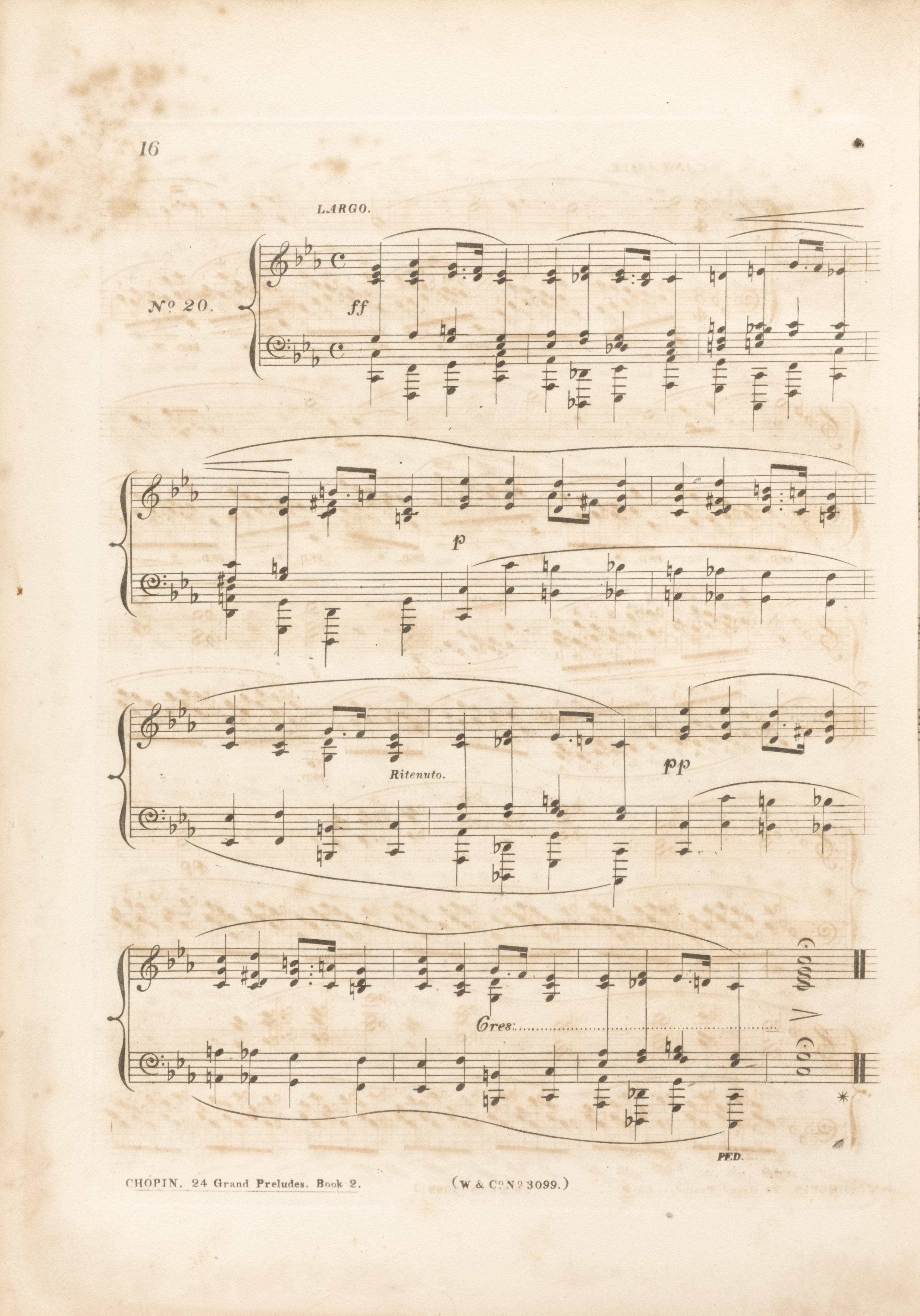



The indication is written in A between b. 7 and 8. Since b. 11-12 are marked as their repetition, perhaps it should be included there too. On the other hand, the abridged notation of b. 9-12 contains separate performing indications, which do not include another ritenuto, which may suggest that it should not be repeated. In turn, taking into account the fact that the final bar of the Prelude, filled with a chord with fermata, initially directly followed b. 8, we can assume that the ritenuto was supposed to lead to the fermata; therefore, after the Prelude had been extended to include b. 9-12, it should be in b. 11-12. Let us look closer at each of these possibilities:
- ritenuto only in b. 7-8, where it is written in the manuscripts. When interpreted literally, this version is not musically convincing – slowing down the ending of the phrase the first time and then repeating it smoothly before the final fermata clearly contradicts the natural sense of musical time. After all, one can assume that upon seeing this notation, the vast majority of pianists would include a ritenuto also in b. 11-12, considering that the indication in b. 7-8 should be applied in both phrases.
- ritenuto in both places, which is given by EE2, although not as an interpretation of the manuscript, but as a compilation of the versions of FE and GE. Assuming a rational differentiation between the two slowdowns depending on their function – underlining the end of the four-bar phrase the first time and the end of the entire piece the second time – this version may accurately describe the alleged intention of Chopin.
- ritenuto only in b. 11-12. Such an interpretation does not directly stem from the notation of A (→FC); however, it is most natural in terms of music – it is only with the ritenuto that the heroic and tragic overtones of the beginning of the Prelude (returning thanks to the crescendo) reach the final depth of seriousness. At the same time, the absence of the indication in b. 7-8 does not limit the performers, who are always entitled to properly, agogically emphasize the structure of music in the ending of a phrase.
To sum up, in the main text we suggest the third of the above possibilities; however, we consider the second one to be an equal variant.
Compare the passage in the sources »
category imprint: Interpretations within context; Differences between sources
issues: EE revisions, GE revisions, Inaccuracies in CGS
notation: Verbal indications

